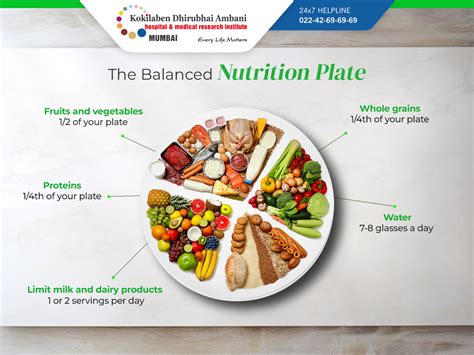Intro
Discover the art of balancing nutrition in and out of the home. Learn how to make healthy choices, manage meal planning, and navigate eating out while maintaining a balanced diet. Get expert tips on nutrition planning, meal prep, and mindful eating to support a healthy lifestyle, whether at home or on-the-go.
Balancing nutrition is a crucial aspect of maintaining a healthy lifestyle. With the ever-increasing demands of modern life, it can be challenging to ensure that we are fueling our bodies with the right foods, both in and out of the home. The consequences of a poor diet can be severe, from weight gain and energy crashes to chronic diseases like diabetes and heart disease. In this article, we will explore the importance of balancing nutrition, provide tips for healthy eating at home, and offer guidance on making nutritious choices when eating out.

Why is Balancing Nutrition Important?
A balanced diet provides the body with the necessary nutrients, vitamins, and minerals to function optimally. When we eat a balanced diet, we are better equipped to manage stress, maintain energy levels, and support overall health and wellbeing. On the other hand, a diet that is high in processed foods, sugar, and unhealthy fats can lead to a range of negative health consequences.
Some of the key benefits of balancing nutrition include:
- Weight management: Eating a balanced diet can help with weight loss and maintenance, reducing the risk of obesity-related diseases.
- Improved energy levels: A diet rich in whole foods can provide sustained energy levels, reducing the need for sugary snacks and caffeine.
- Reduced risk of chronic diseases: A balanced diet can help to reduce the risk of chronic diseases, such as heart disease, type 2 diabetes, and certain types of cancer.
- Improved mental health: A diet rich in omega-3 fatty acids, vitamins, and minerals can support mental health and wellbeing.
Key Principles of Balancing Nutrition
So, how can we balance our nutrition? Here are some key principles to keep in mind:
- Eat a variety of whole foods: Focus on whole, unprocessed foods, including fruits, vegetables, whole grains, lean proteins, and healthy fats.
- Include a range of colors: Eat a rainbow of colors to ensure you are getting a range of vitamins and minerals.
- Watch portion sizes: Pay attention to serving sizes and control the amount of food you eat.
- Limit processed and packaged foods: Try to limit your intake of processed and packaged foods, which are often high in unhealthy ingredients.
- Stay hydrated: Drink plenty of water throughout the day to stay hydrated and support overall health.
Healthy Eating at Home
Eating at home provides the perfect opportunity to balance your nutrition. Here are some tips for healthy eating at home:

- Plan your meals: Take some time to plan your meals for the week, including breakfast, lunch, and dinner.
- Shop smart: Make a grocery list and stick to it, focusing on whole foods and avoiding processed and packaged foods.
- Cook from scratch: Cooking from scratch allows you to control the ingredients and portion sizes of your meals.
- Involve the family: Make mealtime a family affair, involving everyone in the planning and preparation of meals.
Some healthy meal ideas for home include:
- Grilled chicken or fish with roasted vegetables and quinoa
- Lentil soup with whole grain bread and a side salad
- Stir-fry with lean beef, mixed vegetables, and brown rice
Healthy Snacking at Home
Snacking is an essential part of maintaining energy levels and supporting overall health. Here are some healthy snack ideas for home:
- Fresh fruit and nuts
- Carrot sticks with hummus
- Yogurt with berries and granola
- Energy balls made with oats, nuts, and dried fruit
Making Nutritious Choices When Eating Out
Eating out can be challenging when it comes to balancing nutrition. Here are some tips for making nutritious choices when eating out:

- Choose restaurants that serve whole foods: Opt for restaurants that serve whole, unprocessed foods, such as salads, grilled meats, and vegetables.
- Read the menu carefully: Take some time to read the menu and look for healthy options, such as lean proteins, whole grains, and plenty of vegetables.
- Ask for modifications: Don't be afraid to ask for modifications, such as holding the cheese or swapping fries for a side salad.
- Control portion sizes: Be mindful of portion sizes and try to eat until you are satisfied, rather than stuffed.
Some healthy options when eating out include:
- Grilled chicken or fish with roasted vegetables and quinoa
- Salads with lean proteins and whole grains
- Lentil soup with whole grain bread and a side salad
Healthy Fast Food Options
Fast food can be a convenient option when we are in a hurry. Here are some healthy fast food options:
- Grilled chicken sandwiches with whole grain buns and plenty of vegetables
- Salads with lean proteins and whole grains
- Soups with whole grain bread and a side salad
Conclusion
Balancing nutrition is a crucial aspect of maintaining a healthy lifestyle. By following the key principles of balancing nutrition, eating a variety of whole foods, and controlling portion sizes, we can support overall health and wellbeing. Whether we are eating at home or out, making nutritious choices is essential for maintaining energy levels, managing stress, and reducing the risk of chronic diseases. By incorporating these tips into our daily lives, we can take the first step towards a healthier, happier us.
What are the key principles of balancing nutrition?
+Eating a variety of whole foods, including fruits, vegetables, whole grains, lean proteins, and healthy fats, and controlling portion sizes.
How can I make healthy choices when eating out?
+Choose restaurants that serve whole foods, read the menu carefully, ask for modifications, and control portion sizes.
What are some healthy snack ideas for home?
+Fresh fruit and nuts, carrot sticks with hummus, yogurt with berries and granola, and energy balls made with oats, nuts, and dried fruit.
